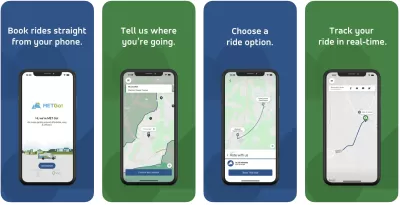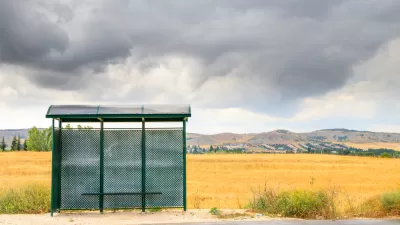Two Virginia transit companies launched pilot projects for on-demand microtransit services in 2021, spurring record growth in ridership as a result.

Public transit won’t work in rural settings like it does in urban areas—but that doesn’t mean it won’t work at all.
Two rural Virginia transit agencies, Bay Transit on the Northern Neck and Mountain Empire Transit in the Southwest, are proving that point after launching on-demand microtransit services in 2021 and achieving significant ridership growth in 2022.
An article by Wyatt Gordon tells the story of the two transit agencies’ foray into on-demand microtransit, from an inception that was enabled by the state’s Department of Rail and Public Transportation (DRPT) applying for an Integrated Mobility Innovation grant from the Federal Transit Administration.
The pilot project launched by Mountain Empire Transit (METGo) with that funding provides a fare-free alternative to traditional Medicaid-sponsored transportation that previously was the only option for seniors living in the METGo service area.
“In 2022, METGo riders comprised 38% of the system’s total ridership, helping Mountain Empire Transit to set a new ridership record,” reports Gordon.
In the Northern Neck, “Bay Transit eliminated two underperforming fixed routes that served the Gloucester County courthouse and replaced them with the Bay Transit Express-branded microtransit service,” reports Gordon. “The result was a 222% increase in ridership compared to the cut routes.”
The Bay Transit pilot project was so popular that the county is now paying for the service “via a combination of regular operating dollars and a matching grant from the locality.”
FULL STORY: New microtransit service more than doubled ridership in rural regions

Alabama: Trump Terminates Settlements for Black Communities Harmed By Raw Sewage
Trump deemed the landmark civil rights agreement “illegal DEI and environmental justice policy.”

Planetizen Federal Action Tracker
A weekly monitor of how Trump’s orders and actions are impacting planners and planning in America.

The 120 Year Old Tiny Home Villages That Sheltered San Francisco’s Earthquake Refugees
More than a century ago, San Francisco mobilized to house thousands of residents displaced by the 1906 earthquake. Could their strategy offer a model for the present?

LA’s Tree Emergency Goes Beyond Vandalism
After a vandal destroyed dozens of downtown LA trees, Mayor Karen Bass vowed to replace them. Days later, she slashed the city’s tree budget.

Sacramento Leads Nation With Bus-Mounted Bike Lane Enforcement Cameras
The city is the first to use its bus-mounted traffic enforcement system to cite drivers who park or drive in bike lanes.

Seattle Voters Approve Social Housing Referendum
Voters approved a corporate tax to fund the city’s housing authority despite an opposition campaign funded by Amazon and Microsoft.
Urban Design for Planners 1: Software Tools
This six-course series explores essential urban design concepts using open source software and equips planners with the tools they need to participate fully in the urban design process.
Planning for Universal Design
Learn the tools for implementing Universal Design in planning regulations.
Ada County Highway District
Clanton & Associates, Inc.
Jessamine County Fiscal Court
Institute for Housing and Urban Development Studies (IHS)
City of Grandview
Harvard GSD Executive Education
Toledo-Lucas County Plan Commissions
Salt Lake City
NYU Wagner Graduate School of Public Service





























